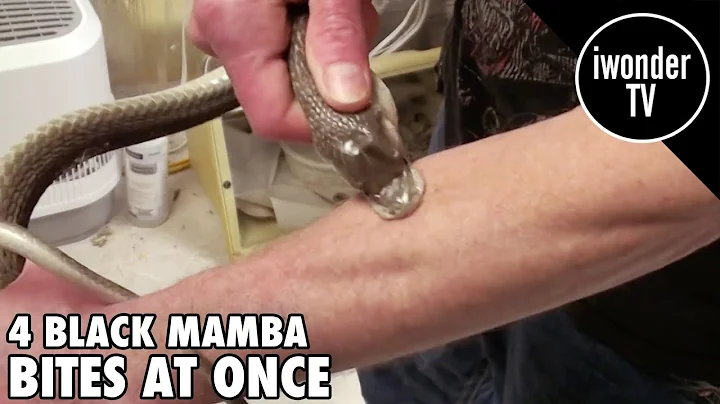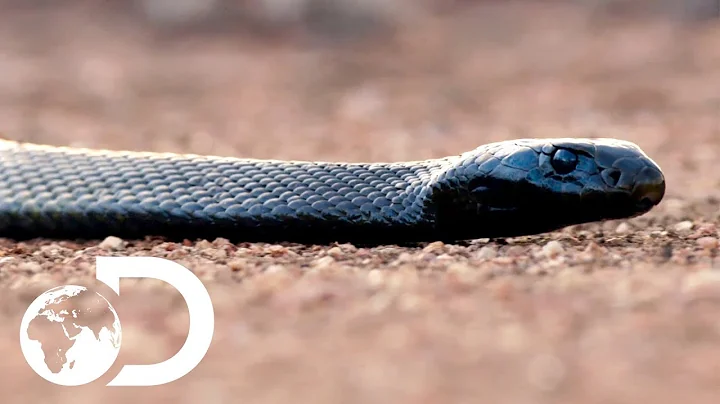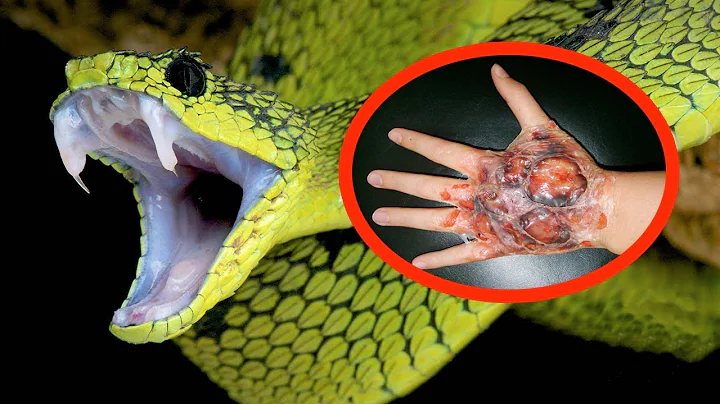A US mechanic has endured the bites of the world's most venomous snakes to help immunologists create anti-venom compounds.

Tim Fried often has snake bites on his hands
Tim Fried has been bitten by venomous snakes more than 200 times. Almost every time, he was actively encouraging the snake. Whether it's a cobra , a mamba, a green snake, a viper, a bell snake or a scorpion, Freed is willing to stick out their teeth and take a bite out of the most fearsome animal on earth.
Fried, a 53-year-old machinist from , Wisconsin, currently works as a crawler for Centennial Vaccine Research in California. The company is looking to produce anti-venom compounds for all of the world's most dangerous solids. Before starting this painstaking work, Fried was just an amateur snake collector. As a high school student, he roamed rural Wisconsin in search of striped snakes, which have extremely mild venom. Fried then went on to keep more venomous snakes in his home.
Fried was constantly at risk of being bitten by venomous snakes, and he discovered that he needed to develop immunity. In theory, by stimulating the body to produce antibodies to fight the toxin, Freed could be better prepared to deal with future solid venom. He began squeezing the venom from the snakes he kept at home and injecting it into his body multiple times. Fried carefully dilutes the venom, similar to how commercial manufacturers collect antibodies from horses or sheep to create anti-venom compounds. "The work was difficult because there was no manual. So I learned by writing a lot of notes and taking a lot of photos," Fried said.
In 2001, Fried experienced his first unexpected fatal bite. As he squeezed out the venom from an Egyptian cobra at his home in Wisconsin, the animal wrapped around his finger and bit him. Although Fried has some immunity, Fried is still affected to a greater or lesser extent. But just an hour later, he resumed fighting the Tuhu. The snake lashed out at his tail, bit at his teeth, and bit at his arm. "Two cobras bit me back to back within an hour. Basically, I was lying there and almost dead. The experience was not pleasant at all. I was immune enough for one bite, but not two. I completely collapsed," Fried said.
Fried remained in a coma for four days, led by his wife and neighbors. After waking up, he realizes that he needs to stop injecting venom or a more complete procedure, and chooses the latter.
Over the next 17 years, Fried was regularly introduced to the body with the venom of a series of exotic snakes. In addition to 200 direct bites, he also injected poison approximately 500 times with hypodermic needles. The most potent venoms Freed has seen include the coastal taipan, water cobra, Indian cobra, , diamond bell tail, Mojave bell tail, four mamba species and many scorpion snakes.
Generally speaking, when a snake bites, liquid venom is secreted along the grooves of the gums into the victim's body and causes pain. "Almost every bite hurt, like being burned by a bee a hundred times," Fried said. He said it was part of a scientific experiment to find out if he could defeat some with his own immune system. Unique animals in nature.
A video of a venomous snake bite posted by Fried on social media caught the attention of American immunologist Jacob Glanville, whose brain was found via Centivax. Working together, Glanville hopes to help people around the world escape the effects of the pandemic. First on his list is snake venom. Glanville and Fried are seeking to produce a universal anti-venom. Hope Revolution, using Fried's antibodies, targets areas associated with proteins found in the most dangerous snakes. One of Fried's antibodies, called Centennial LNX-D9, was of particular interest in experiments with mice. , Centi-LNX-D9 has a complete disabling effect on the venom of the native tiger snake, black mamba , golden-lipped scorpion, Egyptian cobra, Cape cobra, Indian cobra and king cobra
Granville said. , he will conduct tests on commonly used anti-toxic compounds in humans within two years and bring the product to the market in three years.The compound can be produced in injectable form and stored at field clinic temperatures.
In addition to benefiting rural residents, the commonly used anti-venom compounds being developed by Granville will help armies thrive in areas where dangerous venomous snakes are present. This may be an incentive for pharmaceutical companies to mass-produce products, helping to reduce costs and get products to the people who need them most at the cheapest price.





















